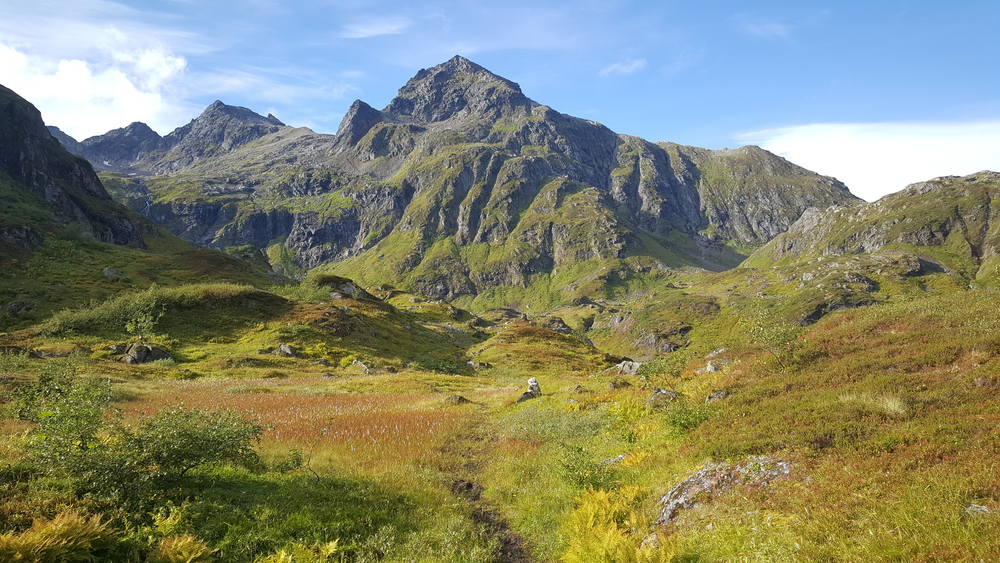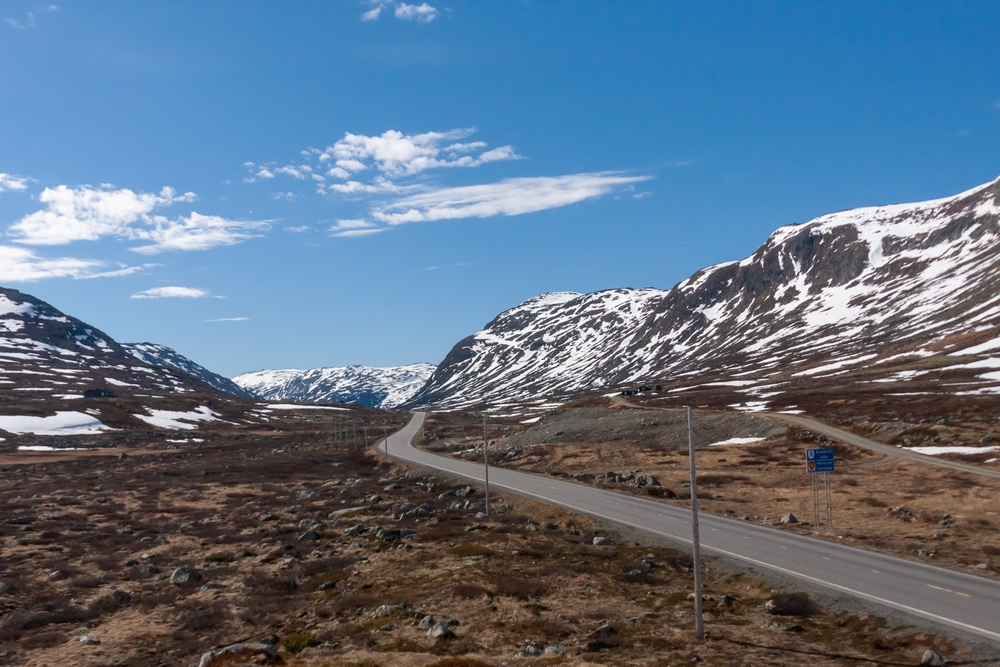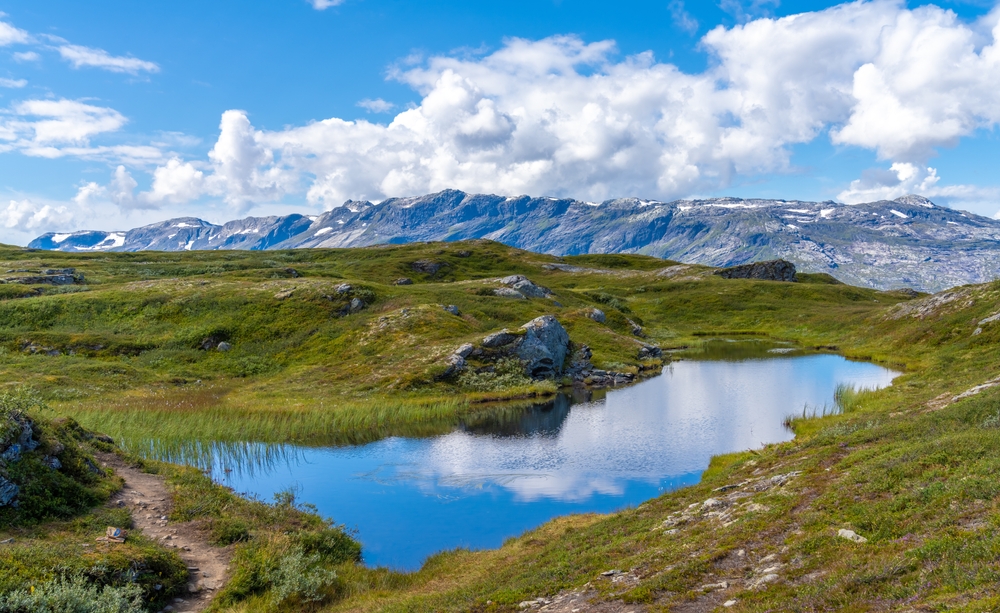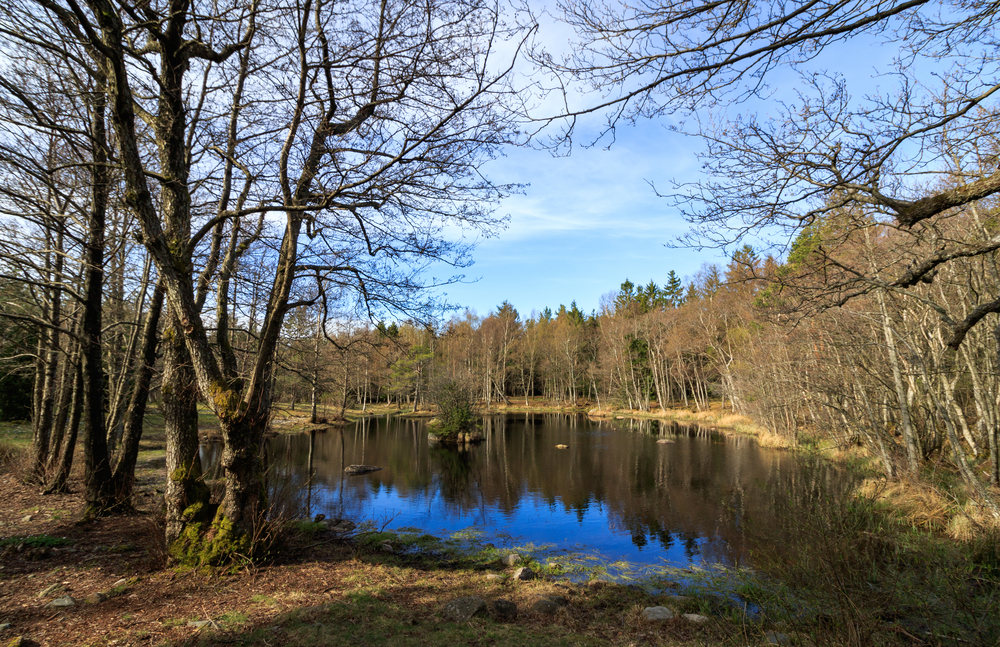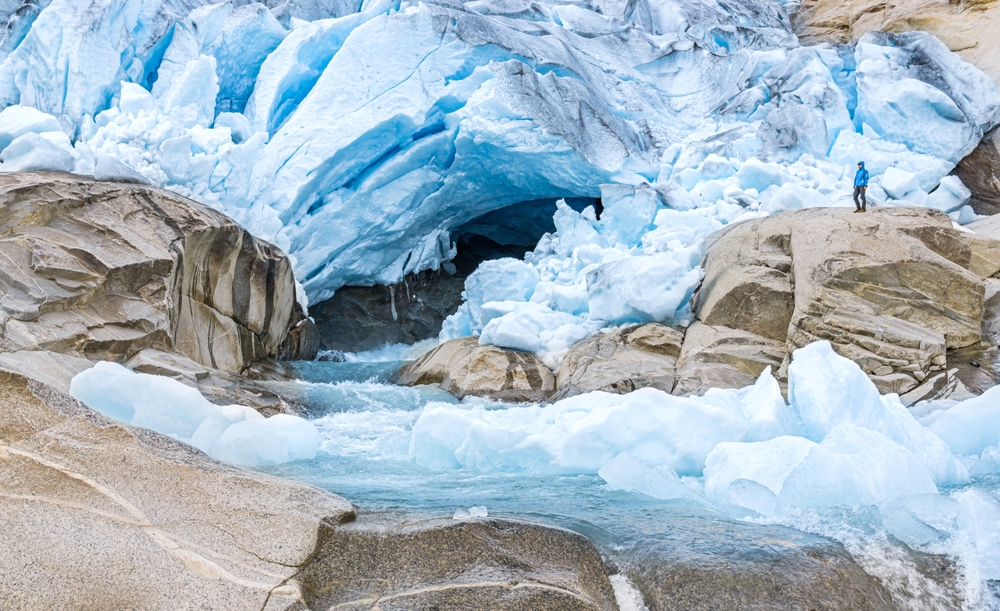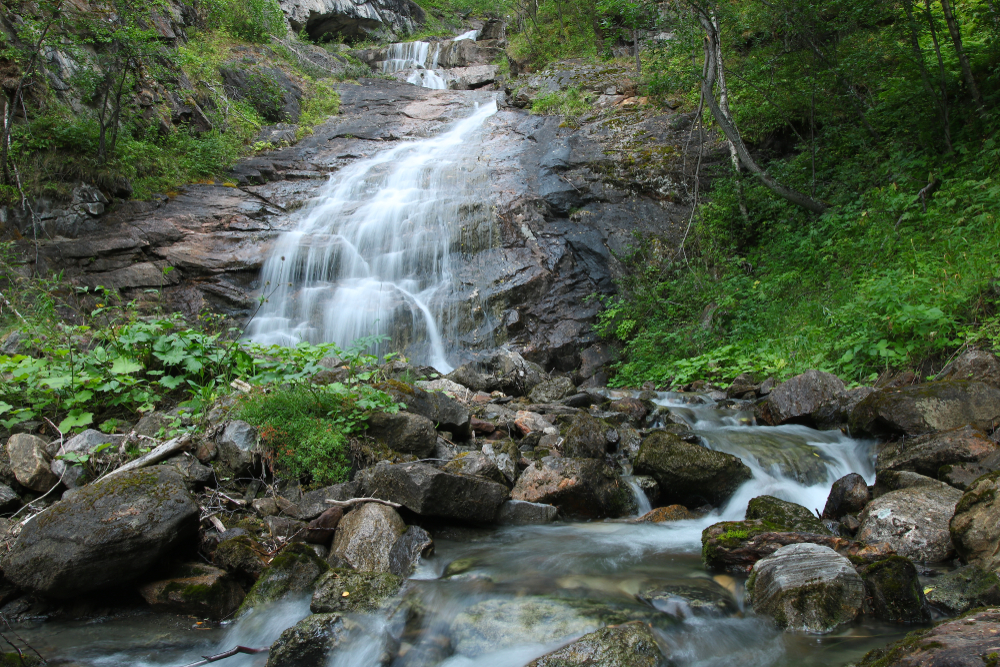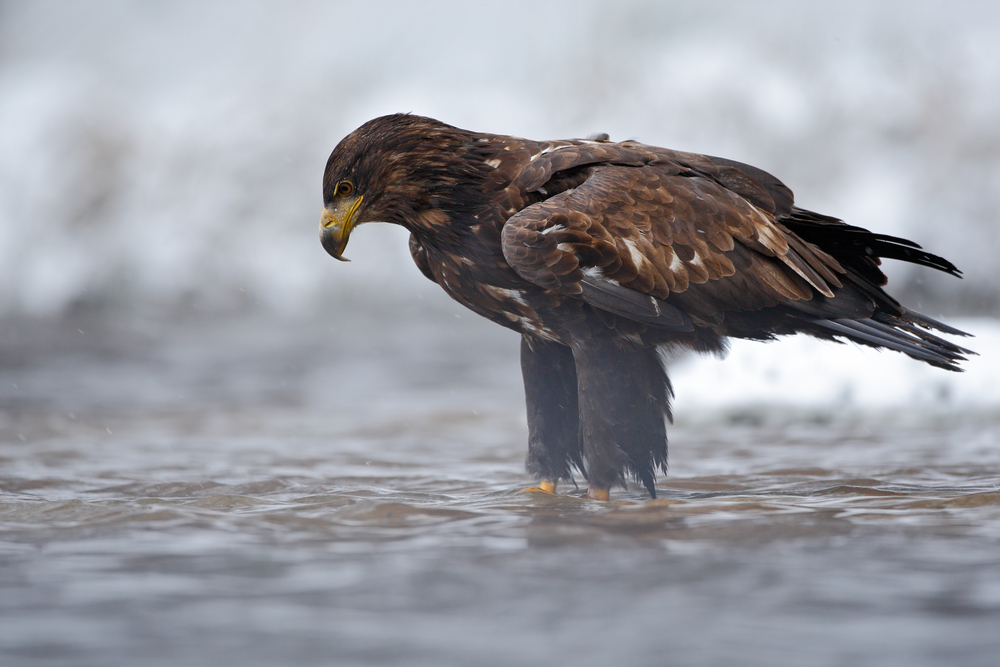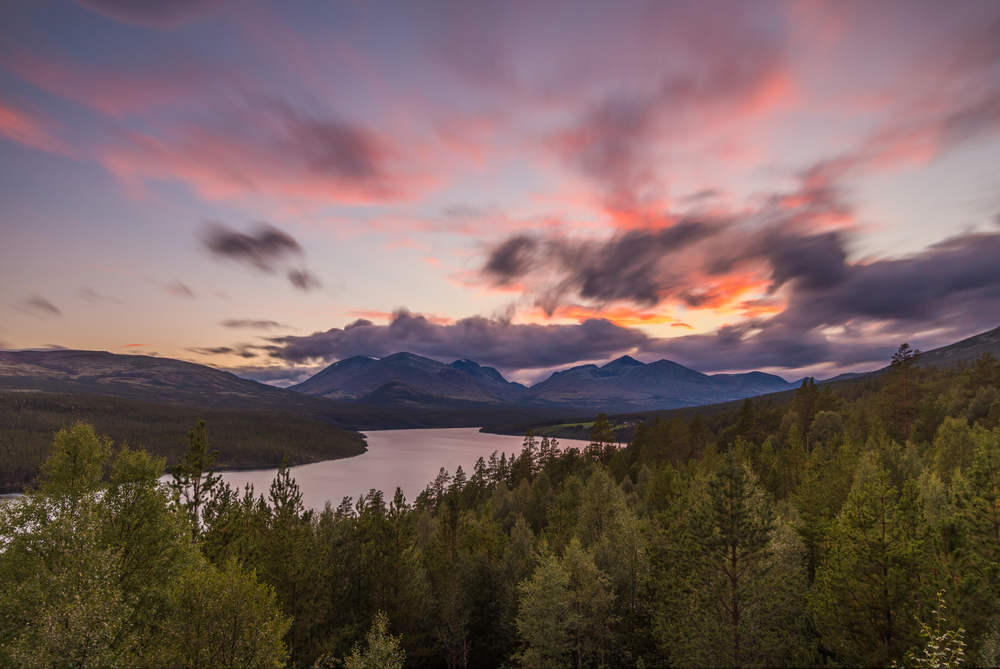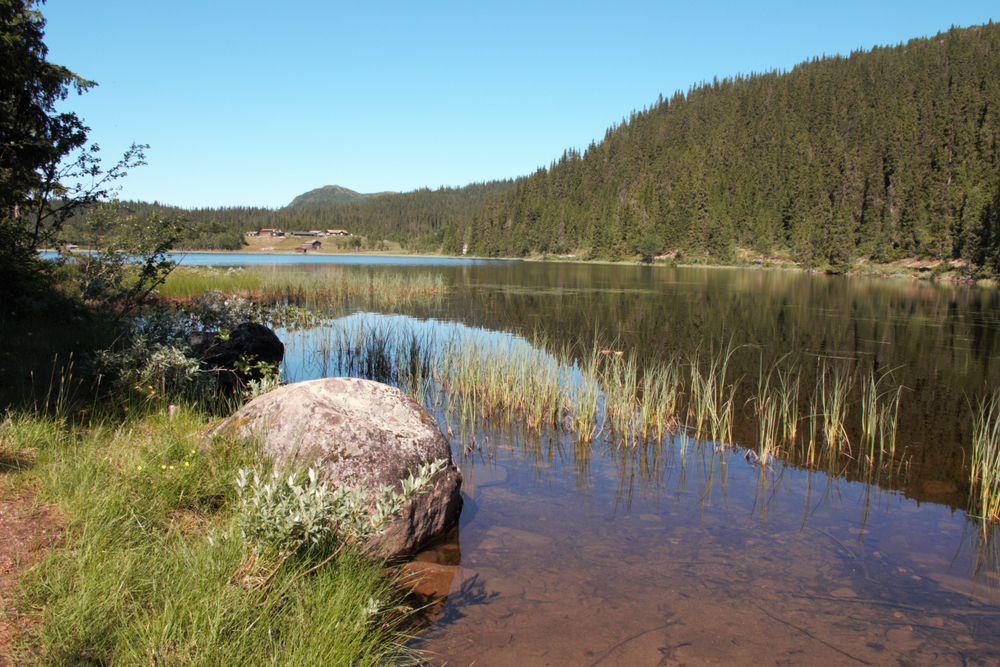Moysalen Overview
Møysalen National Park, known locally as Møysalen Nasjonalpark, is a protected wilderness area located in Nordland County, Norway. The park covers an area of approximately 73 square miles (188 square kilometers) and is situated on Hinnøya and Austvågøya, two islands in the Vesterålen archipelago.
Established in 2003, Møysalen National Park is named after its most striking feature, Møysalen Mountain, which rises to an elevation of 4,124 feet (1,257 meters) and is the highest peak in Vesterålen. The park is recognized for its rugged coastal terrain, dramatic fjords, lush valleys, and pristine alpine landscapes, making it a prime destination for nature lovers and adventurers alike.
The park’s landscape is a striking blend of steep mountains, deep fjords, and lush greenery, shaped over time by glacial activity. Its terrain features a mixture of jagged peaks, rolling hills, and expansive wetlands that support diverse vegetation. Coastal heaths, birch forests, and alpine meadows create a mosaic of plant life, with low-lying areas covered in mosses, lichens, and wildflowers during the warmer months.
The valleys and lower elevations are dominated by mountain birch, which gradually give way to tundra vegetation as the elevation increases. Møysalen Mountain itself is a commanding presence, with snow often capping its summit well into the summer. The area is also interspersed with numerous rivers, lakes, and waterfalls, many of which originate from glacial meltwater.
Wildlife is abundant in Møysalen National Park, with a variety of mammals and bird species inhabiting its diverse ecosystems. Moose are commonly seen in the valleys and forests, while red foxes and otters frequent the park’s waterways. Lynx, though elusive, are present in the region.
The park’s location along the Norwegian coastline also makes it a habitat for marine mammals, with harbor seals and even occasional sightings of orcas and other whales in the nearby fjords.
Birdwatchers will find the park particularly rewarding, as it is home to a variety of seabirds, waders, and raptors. White-tailed eagles are a frequent sight, soaring above the fjords, while species such as the black guillemot and puffins thrive along the coastal cliffs.
One of the park’s most famous features is the hike to Møysalen Mountain, a challenging yet rewarding trek that offers panoramic views of the surrounding islands, fjords, and peaks. The hike typically takes between eight and twelve hours round trip, passing through a variety of landscapes, from dense forests to alpine ridges.
The park’s location near the Arctic Circle also means that visitors can experience the Midnight Sun in the summer and the Northern Lights in the winter, adding to its appeal. In addition to hiking, visitors can explore the park through guided tours, kayaking excursions, and wildlife-watching trips. The nearby fjords provide excellent opportunities for boating and fishing, while winter months bring possibilities for backcountry skiing and snowshoeing.
Conservation efforts in Møysalen National Park focus on preserving its pristine ecosystems while balancing the needs of visitors. The park’s remote location and relatively low visitor numbers have helped maintain its ecological integrity, but climate change poses a challenge, particularly with shifting vegetation patterns and potential impacts on local wildlife.
Sustainable tourism initiatives, including guided hikes and strict regulations on camping and waste management, help to mitigate human impact. Local authorities work closely with conservation organizations to monitor the park’s biodiversity and implement strategies to protect its fragile habitats. Through these efforts, Møysalen National Park remains one of Norway’s most spectacular and untouched natural landscapes, offering visitors an immersive experience in the Arctic wilderness.








































































